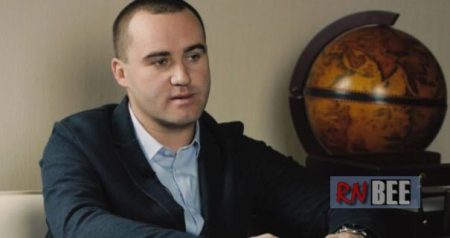They have gained insight into the final weeks of prisoner Vazha Bochorishvili's life, who was serving time at IK-1 of the UFSIN in Russia's Yaroslavl region and passed away there, at the prison hospital in May 2017.
The death had grave consequences for the Yaroslavl UFSIN: shortly after, a video of torture surfaced from the colony, involving prisoner Yevgeny Makarov. This led to the initiation of the first criminal cases against the employees of the colony. Currently, 10 such videos have been released, leading to criminal cases against over 30 employees, with seven facing sentencing. The lawyers from “Public Verdict”, leading these investigations, are now seeking justice for those who were complicit in covering up the torture and prolonging the prisoners' suffering with their silence, according to NOVAYA GAZETA.
Human rights defenders are often asked about the motivation behind those who supply them with videos of prison torture. They often simply shrug, attributing it to the unbearable nature of the human psyche.
It's possible that the horrendous three-week demise of Vazha Bochorishvili served as such a catalyst for someone.
Back in 2017, Novaya reported that convict Vazha Bochorishvili was tortured and subsequently died within the confines of Yaroslavl IK-1. This information was provided by other prisoners who had also suffered.
Recently, the head of the “torture” IK-1 in Yaroslavl was placed on leave and will not be returning to work. However, who bears responsibility for the torture and deaths of the prisoners?
At the time, all that was known was that a prisoner named Vazha had been transferred to Yaroslavl not long before. Aware of the harsh rules of the colony, his relatives had initially hired a lawyer to visit Vazha once a week, hoping that his health would not deteriorate under the watchful eye of the lawyer. The lawyer visited him for several months without any issues. Subsequently, the relatives decided to end the lawyer's visits, after which inspections resulted in Vazha being severely punished in the educational work class and beaten with truncheons. Following these 'measures,' he was thrown into the ShIZO and passed away 25 days later.
Following the prisoner's death in the colony, a criminal case was opened and later closed due to 'lack of criminal activity.' The investigation concluded that “the onset of the death of citizen Bochorishvili was due to the nature and severity of his long-term illness, namely decompensated cirrhosis of the liver.” It seemed like the end of his story.
But in the summer of 2021, another video leaked from the colony, recorded on the camera of a portable video recorder of one of the jailers: the prisoner Bochorishvili was tortured on it. And this video revived the criminal case on the fact of his death.
This is how the leadership of the Federal Penitentiary Service comments on the video of torture in the Yaroslavl colony. And the chiefs remain free. We publish new scary videos
In this recording, we see how he, standing in his shorts, surrounded by more than a dozen jailers, is offered to undergo a personal search procedure: sit down and spread his buttocks. Body searches, a standard procedure allowed by the internal regulations of the colony, can indeed be carried out if there is reason to believe that the prisoner is keeping prohibited items with him. However, in the video we can see a woman standing among colleagues – as we can assume, this is the prison paramedic Kashtaeva Yulia Mikhailovna, who is holding an anal dilator in her hands, –
and the regulations just do not allow the presence of a woman when examining a male prisoner. As well as the use of an anal dilator.
We see that Vazha warns the jailers about his poor health, and also that he has serious problems with the gastrointestinal tract:
— How do you go to the toilet? Have you already gone to the toilet before this? the jailer asks him.
“I don’t even eat… I eat bread because I can’t go…” replies Bochorishvili.
After the prisoner refuses to spread his buttocks in the presence of a woman, the colony officers force him to lie on a desk, take off his underpants and begin to beat with rubber sticks indiscriminately: on the thighs, on the buttocks, at some point, when Bochorishvili is turned to face his tormentors, already on belly, and on the penis.
After the video was published, the Investigative Committee for the Yaroslavl Region resumed the criminal case regarding the death of Bochorishvili. As part of the investigation into the procedure for his torture, the investigation ordered a new medical examination. Documents relating to the last days of the life of the prisoner, including the initial examination, dated 2017, were examined. Now in the hands of the lawyers of the Public Verdict there is a document that unfolds the circumstances of the death of Vazha Bochorishvili in a slightly different light.
As follows from this document, on April 12, 2017, Vazha Bochorishvili, who was crucified on a desk and received “at least 30 blows to the buttocks with a rubber stick”, was sent to solitary confinement after the end of the execution.
Public Verdict lawyer Irina Biryukova insists that this was done on purpose in order to hide Bochorishvili’s condition after the experience from other prisoners. But we cannot know this for certain, we can only know that a medical examination, carried out much later, established that he had “extensive cyanotic hematomas on the skin of the lumbar region with a transition to the anterior abdominal wall, on both buttocks, penis, scrotum” . (By the way, the state of the penis and scrotum of the prisoner Bochorishvili is given great attention in this medical report. “Special means are used with a number of restrictions, according to one of which it is not allowed to hit a person with a special stick on the genitals,” experts point out. Explanations of the jailers , as follows from the materials of the case, boil down to the fact that Bochorishvili himself is to blame for getting hit in the scrotum: he spun during the beating, “and I already made a swinging motion with my hand.” Well, in general, “the blows had a relaxing character.”)
The prisoner Bochorishvili was put in the punishment cell in a bad state with large bluish bruises on different parts of the body.
Beating of prisoner Bochorishvili. Screenshot
The Ministry of Justice ordered prison doctors to examine the prisoners daily on weekdays, and on weekends and holidays, upon the prisoners' request. The prison paramedic, senior lieutenant Kashtayeva, examined Bochorishvili on the day he was subjected to force, April 12, 2017, a Wednesday. The next examination happened three days later on April 15. Even though Bochorishvili complained of pain on the 12th, he only received first aid on the 15th, when he was given analgin.
Despite taking analgin, Bochorishvili continued to feel worse and complained whenever the doctors visited (not every day).
On April 20, Bochorishvili reported stomach pains and vomiting blood four times to paramedic Kashtayeva. Kashtaeva noted the presence of bright scarlet blood in the toilet. The next day, Bochorishvili still complained of pain and vomiting blood. Kashtaeva calmly stated: “The condition is relatively satisfactory.”
Bochorishvili was next examined on April 24, when the paramedic noted an improvement in his health but still recommended transferring him to a civilian clinic due to the limitations of the prison hospital. However, Kashtaeva insisted on conducting a general blood test before considering ongoing bleeding from an unspecified location in the gastrointestinal tract.
Five days after Bochorishvili started vomiting blood, he was finally given a general blood test.
On April 25, an ambulance took prisoner Bochorishvili to Rybinsk city hospital No. 9. Local doctors confirmed the presence of at least 10 liters of free fluid in his abdominal cavity. Despite his severe condition and ongoing pain, he was returned to the prison hospital the same day. However, the next day, the prison resuscitator declared his condition serious. The prison doctor concluded that it was not possible to perform a blood transfusion in the surgical department of the prison due to his deteriorating condition.
The construction of the Yaroslavl IK-1
On April 27, Bochorishvili was admitted to the intensive care unit of Rybinsk city hospital No. 1. He was treated for gastric bleeding and then returned to the surgical department of the prison hospital on May 3.
Although he could express his discomfort, Vazha complained of unbearable pain in his stomach, making it difficult to breathe. It was clear that decisive actions needed to be taken for the prisoner Bochorishvili, otherwise he would die in the prison hospital. These steps were indeed taken. On May 5, the prisoner Bochorishvili's case was presented to the forensic medical commission to consider early release due to illness.
It is not known whether Vazha was examined by doctors the day after the question of his release was raised, as there are no corresponding records in his file. However, on the evening of May 7, the prison doctor stated that it was difficult for prisoner Bochorishvili to breathe, and the oxygen pillow had no effect.
An entry dated 08.05.2017 at one in the morning: “The patient is agitated, screaming, and experiencing pronounced suffocation and a feeling of lack of air. After taking chlorpromazine, the patient calmed down and fell asleep.
The prison log did not record any attempts to provide Bochorishvili with other assistance, apart from a sedative injection, nor were there any calls for an ambulance.
Five hours later, Bochorishvili was found unconscious. Resuscitation measures were unsuccessful, and he was pronounced dead.
In the case of Vazha Bochorishvili, I want to mention that he was convicted under Part 4 of Art. 158 for theft committed by a group of persons. He had already served two out of three and a half years of his sentence and would have been released in another year and a half. It is tragic that Vazha paid with his life for his theft.
The initial investigation following the prisoner's death did not find a link between the “educational event” on April 12 and the death less than a month later. The official cause of death is still stated as “decompensated cirrhosis of the liver.” Efforts to challenge this include a petition for re-examination, questioning if there is a link between the beating of Bochorishvili's diseased liver and his subsequent death. Moreover, there are concerns about the behavior of the doctors involved in the last three weeks of his life and the need to hold them accountable, as well as the investigator who found nothing wrong with the actions of the doctors.




